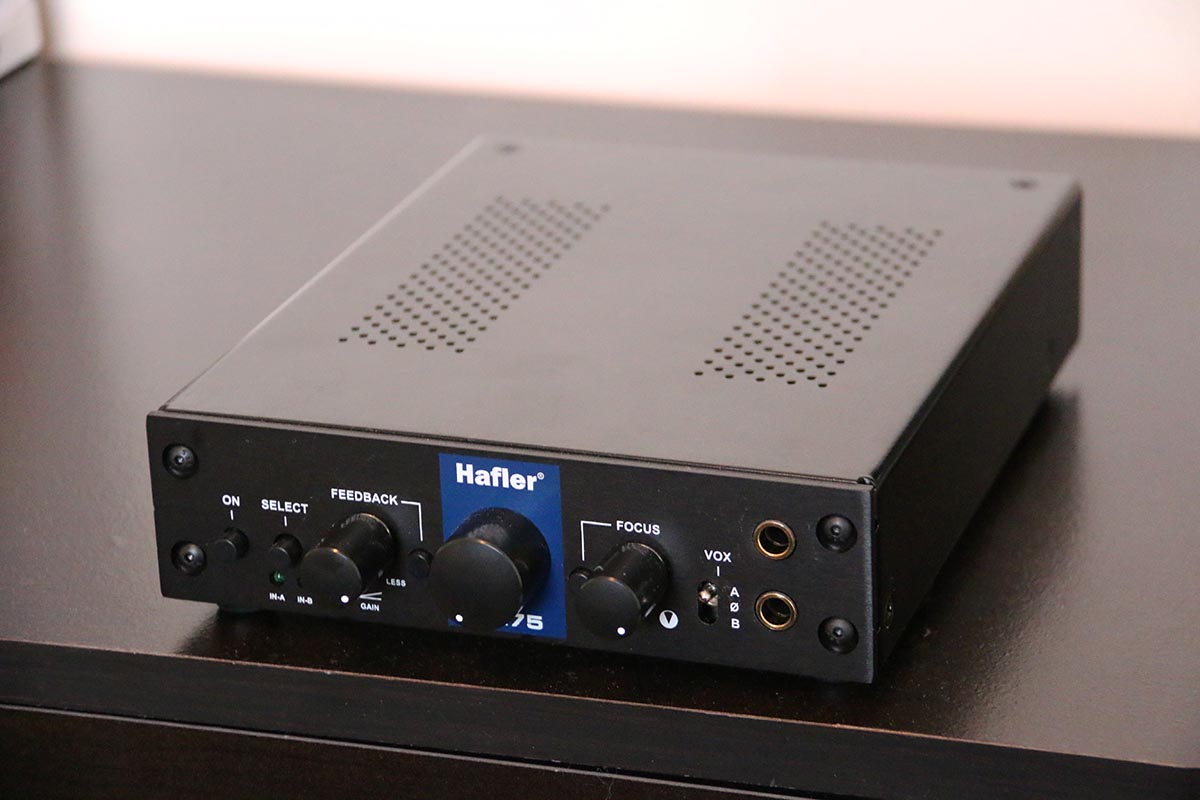
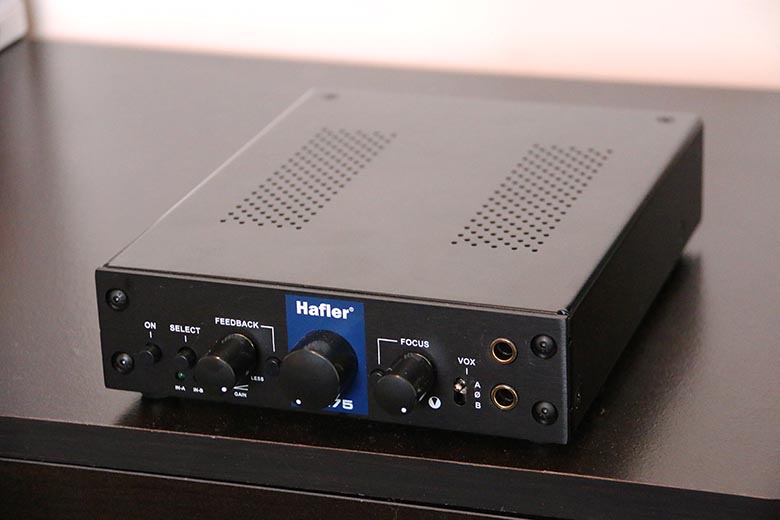


There’s no denying that high-end headphones and headphone amps can be amazingly nerdy. Wade into even the shallow end, and you’ll find yourself swamped by a discussion of whether a 12AX7 tube is better than a 6S7L, or an endless debates about Class A, Class B, and Class A/B amps, often conducted by people who can call a volume knob a potentiometer with a straight face. At TMS, we’ve got no truck with jargon-heavy explanations - the only things we’re interested in are good sound, and making it easy to understand audio gear so you can get good sound. But sometimes, in order to achieve that good sound, you need to play around with a piece of equipment that demands you fiddle a little bit, and become a little bit obsessive. Step forward, then, the Hafler HA75 – an amp which came out in 2015, but which is still widely available at an excellent price. And as we’re about to show you, you might have to be a bit of a nerd to get the most out of it, but it is so, so worth it.
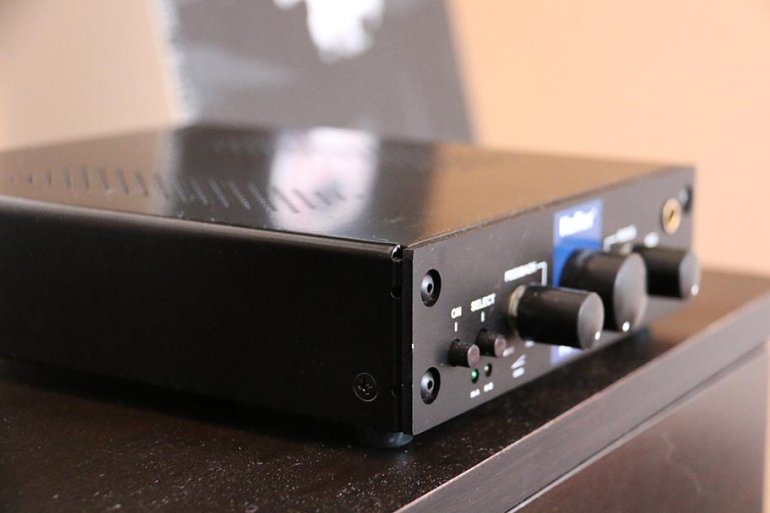
Hafler aren’t an enormously well-known company, but perhaps they should be. They’ve been making amplifiers since 1950, and have a somewhat convoluted history involving multiple buyouts, name sales, and differing distributors. All you need to know right now is that they still produce capable amps for a good price, and that they trade under the Hafler name. Let’s take a closer look at the boxy HA75.
It’s not the flashiest of amps, design-wise – an unobtrusive black box a little longer than a human hand and about as wide. The closest it comes to design flair is a subtle navy highlight around the company logo and amp name on the front. It’s a tube amp – a Class A, which is a type that reduces distortion and raises accuracy, but which can kick out a lot of heat. Don’t expect to tube roll easily; the single 12AX7 tube is hidden away, and you’ll need some DIY skills if you want to swap it out, although this is perfectly possible. Hafler offer a one-year warranty if anything goes screwy with the innards, which should be more than enough.
The staid design and slightly corporate looks remind us of an amplifier we’ve just taken delivery of: the Sony TA-ZH1ES. We’ll have a full review of this amp soon – while it sounds markedly different to the HA75, it has the same black box construction, and the same move towards simple design. Sitting next to each other on our testing shelf, they look kind of like big and little brothers.
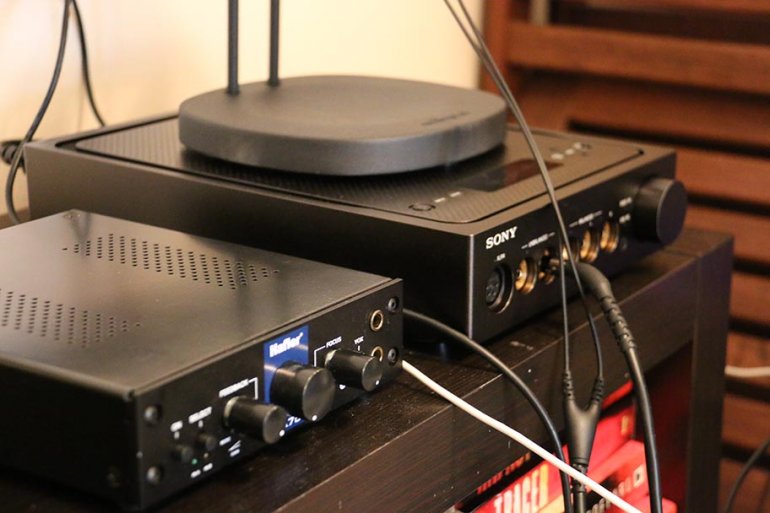
What it lacks in eye candy, it makes up in ease-of-use. Once you understand what each set of controls does, operating this amp is a breeze, as is setting it up. Round the back, you’ve got two selectable RCA inputs, as well as a pair of balanced XLR connectors. You’ve also got a set of connections known as a Thru-Out, which allows you to bypass the circuitry in the amplifier, as well as a Tube Out section that lets you stick the HA75 between a preamp and power amp, in order to use the tube to warm up the audio. Most people won’t need to worry about anything but the RCA inputs, but it’s good to know that these options are there, and they work well. There’s also a power supply connector – the power supply itself is a hefty brick, and the cable is long enough for most rooms.
(Quick one while we are talking about the power supply. We did notice that the brick emitted a slight low-frequency noise when plugged in, even when the amp itself was off. It’s by no means a dealbreaker, but don’t be too surprised if you hear it. You can always unplug the power supply if it bothers you.)
The top panel of the amplifier has some discreet heat vents. It’s worth noting that even after extended periods, we didn’t feel the amplifier got too hot to handle, which is always a worry. The heat was never above a gentle warmth. On the bottom are four tough rubber feet.
Round the front is where things get really interesting. You’ve got a power switch with a pleasing click, and an identically designed input selector. There is a large potentio - sorry, volume knob, and not one but two 6.3mm headphone jack outputs, which is great if you want to show the amp off to a friend. The really interesting parts are the two controls on either side of the volume knob: Feedback, and Focus. These are what make the amp so special, and we’ll talk about them in the section below. We’ll also spend a little bit of time talking about the Vox switch next to the headphone outputs, which lets you alter the character of the sound.
Hafler note that if you want the amp to work as well as it should, you need to let it warm up for at least fifteen minutes, to make sure all the internals have achieved “thermal stability”. That’s something we love about headphone amps like this – the anticipation, the waiting, the need to plan ahead – but we recognise this isn’t going to be for everyone. If you don’t like to wait around, then this is probably not the amp for you. But if you do, if you have a slight tendency towards masochism, then step right up. We’re going to talk about the sound of the HA75 next, and this is where things get wonderfully nerdy…
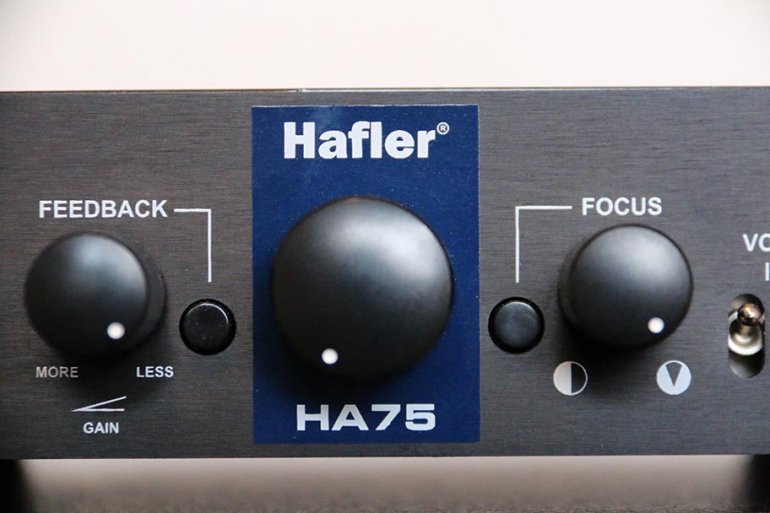
At its heart, this is a textbook tube amp: big, warm, rich and deep. It will give any recording you put through it a beautifully lush, gooey quality. Even if it were just a simple amp, it would probably leave us smiling, as it does a terrific job. But see, the HA75 isn’t just an ordinary amp. It has not one, but two – maybe even three – killer selling points, ones that mark it out as something truly special, and also offer something we haven’t seen in others of its kind.
We’re referring to the two smaller control knobs on the front, and the switch by the headphone ports, Feedback, Focus and Vox. It’s worth talking about each of these individually, and explaining what they do to the sound.
Feedback is by far the most interesting control. Essentially, it allows you to alter the amount of feedback in the system to the cathode tube the audio is passing through – meaning, in effect, you control just how much tube character the audio has. Counterintuitively, the more feedback you dial in, the less tubey things will sound. The audio becomes cleaner, clearer, more accurate if slightly less exciting. It also lowers the gain, meaning you’ll have to turn up the volume a little. But if you dial in less feedback by turning the knob clockwise, you get a far more tube-heavy, squelchy sound – and much more volume.
One of the biggest complaints about tube headphone amps is that their sound is an acquired taste. Some people simply don’t like the bouncy, squashy quality they give to things like drums and basslines. With the HA75’s Feedback control, that’s simply not an issue anymore. You can have precisely as much or as little tube as you want. It works incredibly well, shows immediate results that are dead simple to understand, and is something we got addicted to very quickly.
The Focus control is equally interesting. Dial it all the way to the left, and you’ll get a traditional headphone mix, with left and right channels separated. But dial it all the way to the right, and the amp will mimic a speaker setup, letting the channels bleed into each other slightly. Ostensibly designed to help sound engineers do a better mix, it also makes listening to music a zillion times better. 90% of the time, we had it turned all the way to the right, creating a fantastic soundstage in our ears.
You can further alter the sound using the Vox switch, which lets you select three options: bass enhancer, loudness, or neutral. The first, very obviously, increases the bass to compensate for headphones that may lack it. The loudness option, interestingly, doesn’t make things louder - not technically. It simply warms the tones further when listening at low volume levels, allowing you to listen to music for longer. Setting the switch to neutral lets you bypass the section entirely.
As you can probably imagine, the combinations are endless here. We found ourselves naturally gravitating to two-thirds Feedback and full clockwise Focus, with the bass enhancer on. We tried very, very hard to throw something at the HA75 that would cause problems for it, and we couldn’t. If we pumped some soul or hip-hop through it, the tubes simply ate up the sound, giving back glorious, warm audio that never felt overdone. Obviously, these tube settings weren’t appropriate for things like dance music or heavy metal, but dealing with that was simple: just dial up the Feedback, and you instantly have a cleaner, clearer audio signal. The versatility and usability here are just breathtaking. And again, we have to emphasise that this is all on top of an amplifier that performs beautifully, delivering magnificent sound even when the enhancement controls are bypassed (which is easy to do using the dedicated switches).
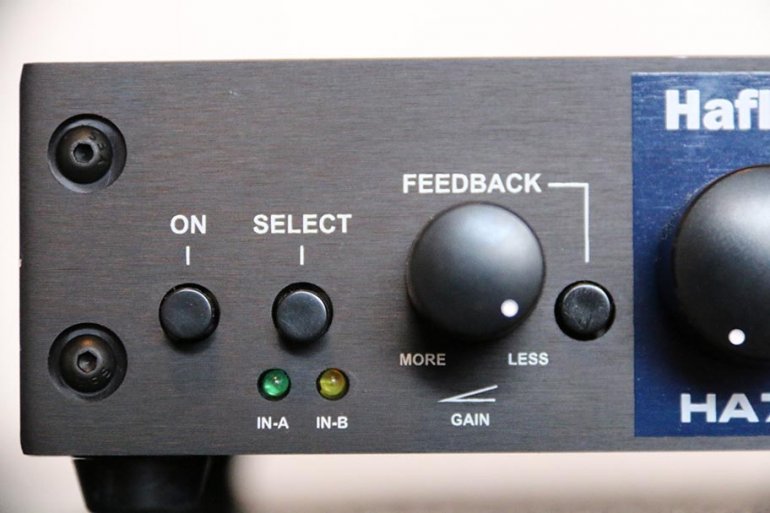
Which brings us to the downside – or at least, a downside if you’re not us. Different genres will require different adjustments to the controls: what works for soul won’t work for dance, and what works for rock is going to sound strange on hip-hop. If you only listen to songs in one genre, you can probably get away with finding your ideal enhancement levels, and leaving it at that. But if you switch between genres – and we did – you need to be constantly adjusting the controls to get the best sound. There’s no memory. No presets. That means that if you aren’t inclined to fiddling with your equipment, or if you just want something that lets you set and forget, you are not going to like this amplifier. We loved it – but then, we have no problem messing around with knobs. If, however, you’re looking for a headphone amp, just bear in mind that this is a demanding buy.
Our DAC for testing was a simple little Optoma Nuforce uDAC5 (full review here), a unit which we know the sound of very well. We used a variety of headphones to test the amp: a pair of MEZE 99 Classics (full review), the fantastic Audioquest Nighthawk Carbon cans (review coming soon) and a neutral pair of Beyerdynamic DT770 Pro 80ohms (which we haven’t reviewed, because they are old as hell). All of them performed well, and we get the feeling that headphone choice comes down to personal preference in this case – hardly surprising, when the sound is so adaptable and versatile. The amp takes any headphone between 8 and 400 ohm impedance, which, these days, means just about any pair on the market. One thing to be aware of is that this amp, if you let it, can get extremely loud – especially when you are fiddling with the Feedback control. You need to be careful that you don’t blow out your headphones – or your own ears. (It’s worth noting, by the way, that if you want the same tube sound but aren’t too bothered about the controls, there’s a baby version of this amp, the HA15, which omits the Feedback control. It’s roughly half the price.)
We test quite a few amps here at TMS. We’ve never come across an amp that offers this much control. Purely on that basis alone, it’s an absolute must for tube fans.
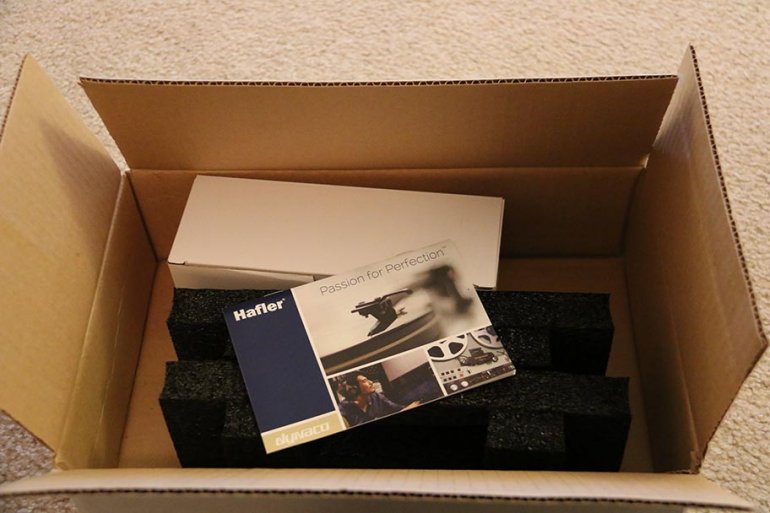
Minimal. Normally we spend a little bit of time talking about the various accessories and packaging that come with a particular product, but they aren’t all that exciting here. The only accessory you actually get is the power cable, along with the attached brick. The cord itself is long - an easy ten feet – and the power brick is relatively light, albeit not exactly subtle. The amp itself comes in a basic cardboard box.
We do, however, have to commend Hafler for their manual. Normally, we don’t really pay attention to these, as we are much happier just plugging things in and seeing what happens (and have the graveyard of exploded amps to prove it) but in this case, we thought we’d better take a look. It’s a comprehensive, easy-to-read document that makes it absolutely clear which bit does what. Other manufacturers should take note.
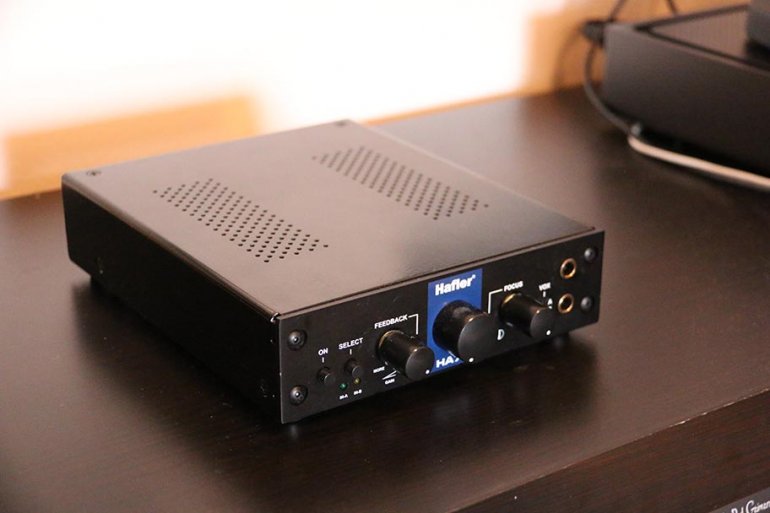
This is definitely not an amp for everyone.
It doesn’t give a rat’s continental about short attention spans or instant gratification. If you want an amplifier that will work on demand, and will work at one setting forever, forget it. This is an amplifier that demands you put a little bit of work in, that monopolises your attention, that expects that you will learn its intricacies. But it’s never confusing. It’s never obscure, or obtuse. It simply says: this is what I do, and it’s up to you to get the best out of me.
That makes its appeal limited to a particular type of audio nerd. But if you’re among that group, this amplifier is going to be nirvana for you. It is a glorious bit of machinery with some terrific sound, and despite its idiosyncrasies and its quotidian design, we adored using it. At $999 on Amazon at the time of writing, we think it’s fairly-priced, too – other tube amps can cost far more, and offer far less control.
Here’s hoping Hafler update it soon. We’ll be first in the queue.
Visit the site for Hafler (via their distributor Rutherford Audio) for more detailed info on the HA75 and other products, or check the specs table below.
(Update 11/5/17: Hafler have said they plan to release a new version of the HA75, with an included DAC! It does, however, lose the feedback control, although it gains an impedance selector. Price is $1,300, a little pricier than the existing HA75.)
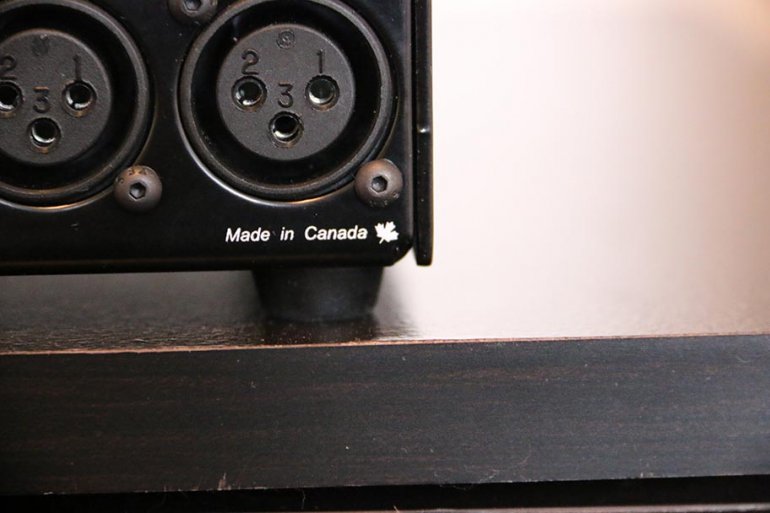
This, as far as we are concerned, is one of the best tube amps available on the planet right now. It offers total tube perfection: a Class A beast with four tubes (two input, two output), a funky transparent top surface that lets you see into the circuits as well as easily tube roll (in other words, switch out the tubes for ones of your choosing), and stunning, world beating sound. Don’t expect to easily get a hold of one of these – LTA is an independent company, and they need a little lead time to assemble, burn-in and ship. Also, don’t expect it to be cheap. But hey: when you’re talking about one of the best amps on the planet, we’d be surprised if it was.
In our review, we said: “Outside of a fiddly power switch [which LTA later told us it had fixed], it simply doesn’t have any weaknesses. It’s an almost perfect amp. And if you’re prepared to make the leap, it will be one of the best things you’ll buy.”
Think about it like this. If the world of headphone audio was a dojo, the Hafler HA75 would be the wise, old master, bursting with knowledge and experience – not pretty to look at, until he busts out a beautiful series of moves and puts you on your ass. The Woo Audio WA7 is the gorgeous pretty boy, the new recruit who wants to be the best fighter ever. Alright: clunky analogy. But there’s no denying that the WA7 is much, much prettier than the HA75, although it offers far less control and versatility.
The sound, however, is just as glorious, and it even includes a built-in DAC for playback. This is properly a more complete solution than the HA75, more plug and play, although you will have to be okay with missing out on those phenomenal additional controls. Note: there are plenty of combinations, so we've recorded the dimensions and weight in the specs table below as Various.
It’s actually quite difficult to find amplifiers with comparable levels of control to the HA75 – after a while, we decided to stop looking. Instead, we’ll offer up a viable alternative in one of the best-performing and most well-liked Schiit amplifiers, the Mjolnir 2.
One of the things it is able to do, that the HA75 cannot, is switch between tube and solid state – or, if that doesn’t mean anything, between warm and rich sound, and cleaner, more accurate sound. It does this by allowing you to swap out the tubes for Schiit’s LYST solid-state circuitry, making it the perfect hybrid amp. Also, there’s no question that you’ll look very cool with a piece of Schiit on your desk.
| Amps | Price | Weight | Dimensions | Head. Imp.* | WPC* | DAC |
|---|---|---|---|---|---|---|
| Hafler HA75 | $999 | 4lbs | 8" x 6.5" x 2" | 8-400Ω | Unknown | No |
| Linear Tube Audio MZ2-S | $1795 | 3.5lbs | 9.5" x 8" x 5.75" | 8-400Ω | 1W/4Ω | No |
| Woo Audio WA7 | $999 | Various | Various | 8-600Ω | 1W/32Ω | Yes |
| Schiit Mjolnir 2 | $849 | 13lbs | 16 x 8.75 x 2.25” | Unknown | 8W/32Ω | No |
*Head. Imp. = Accepted Headphone Impedance